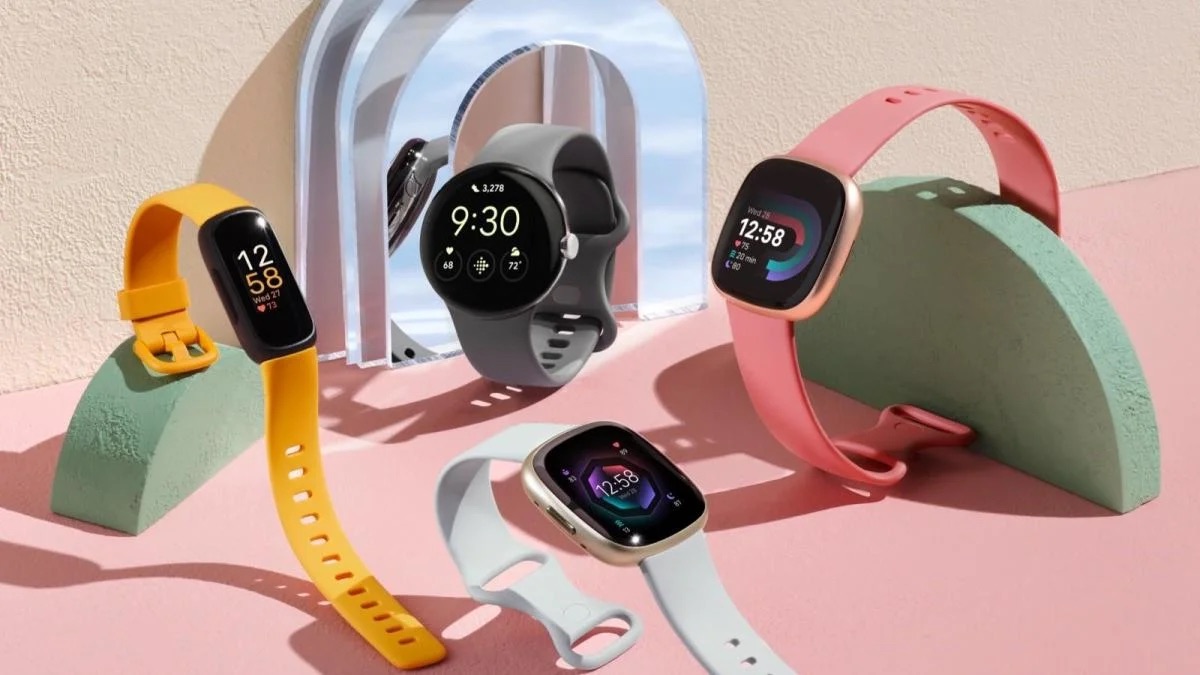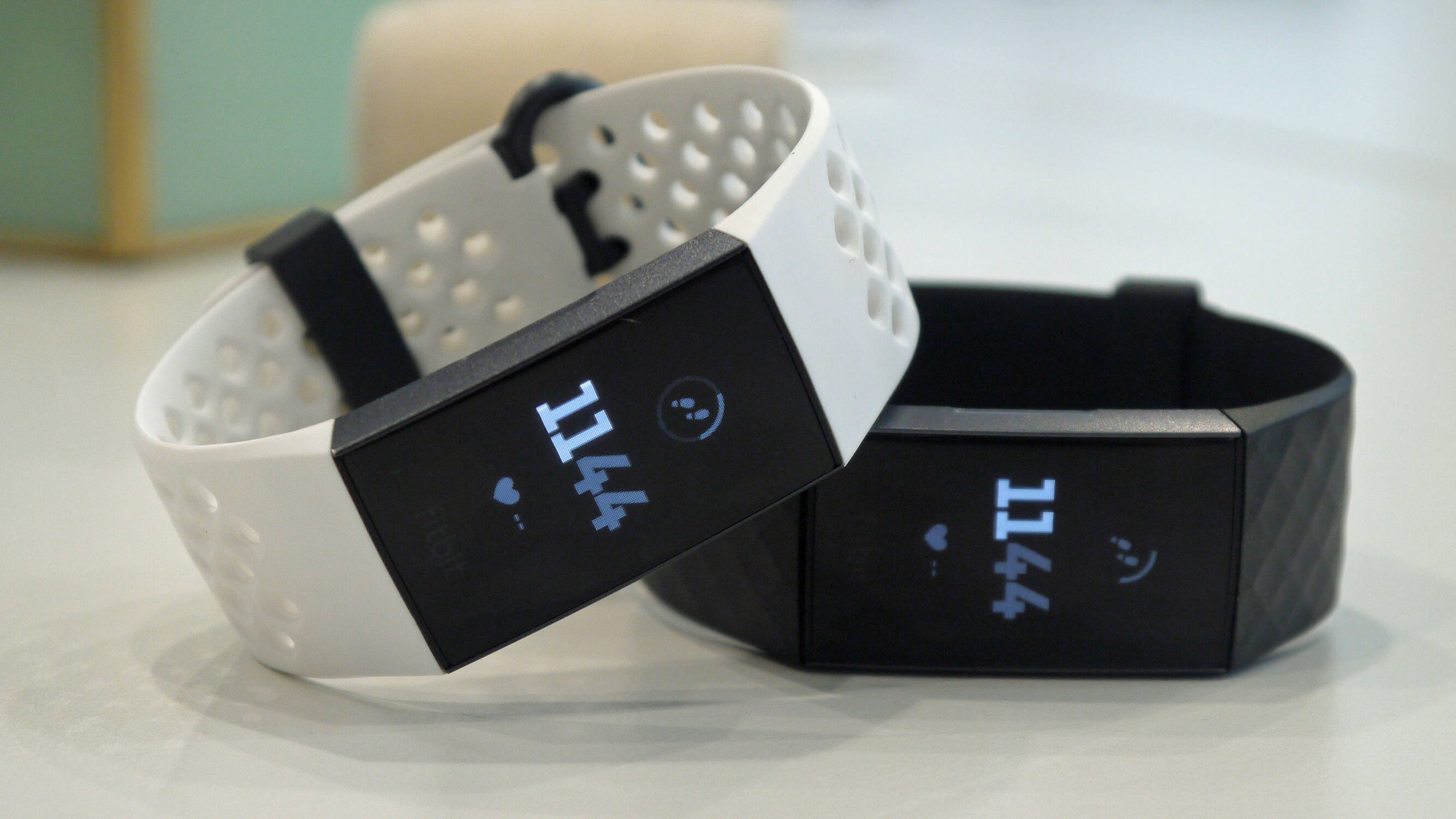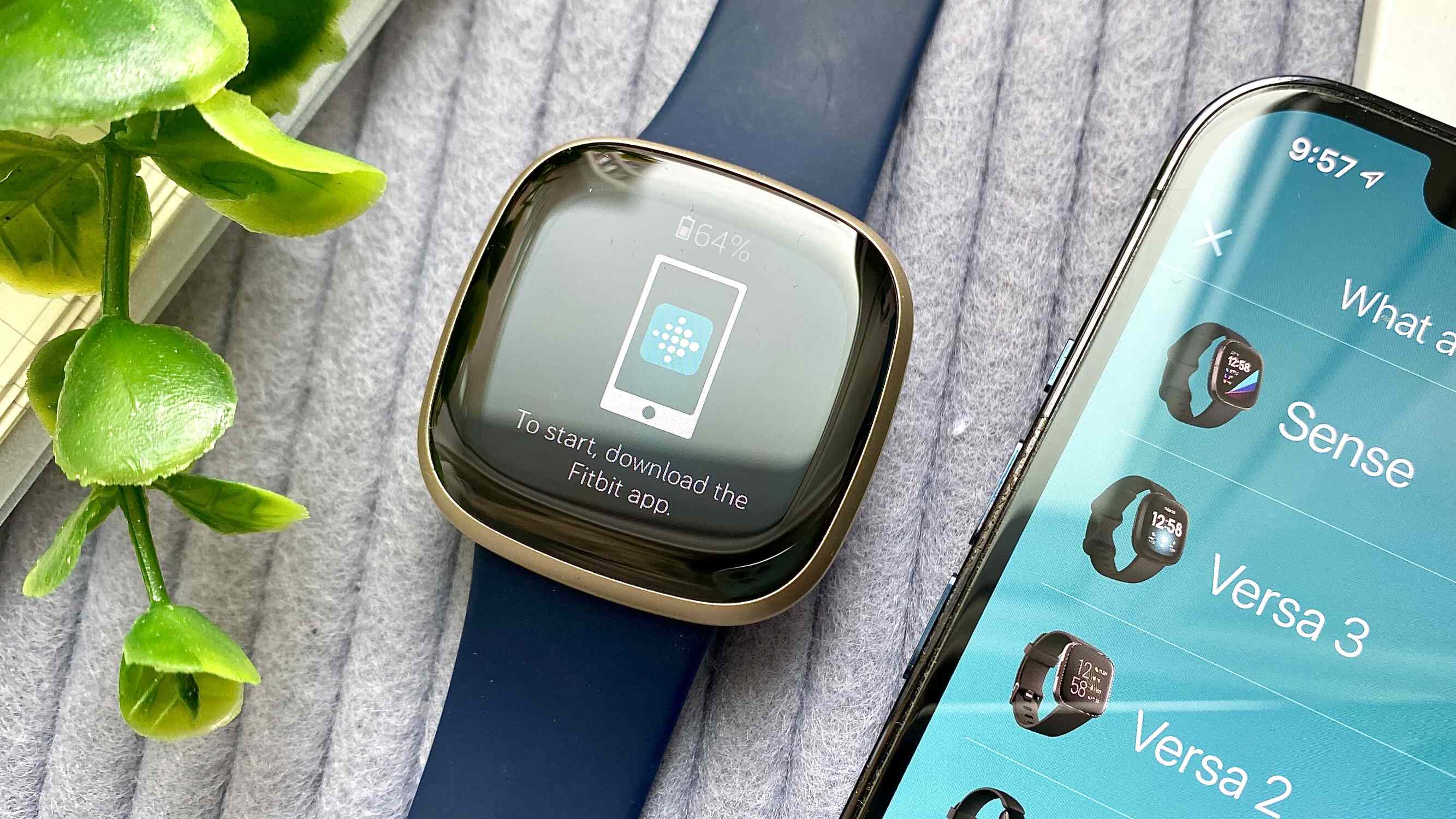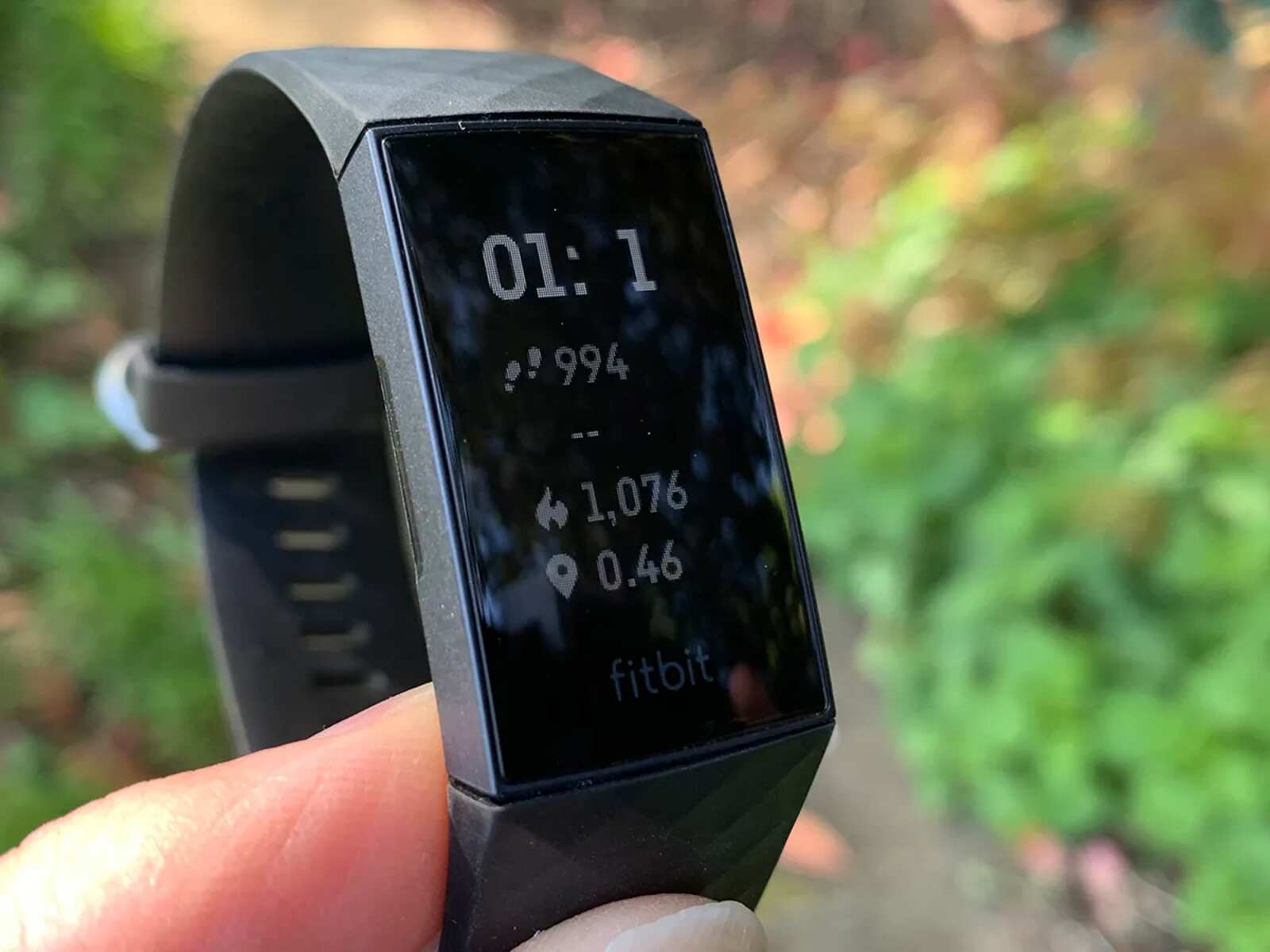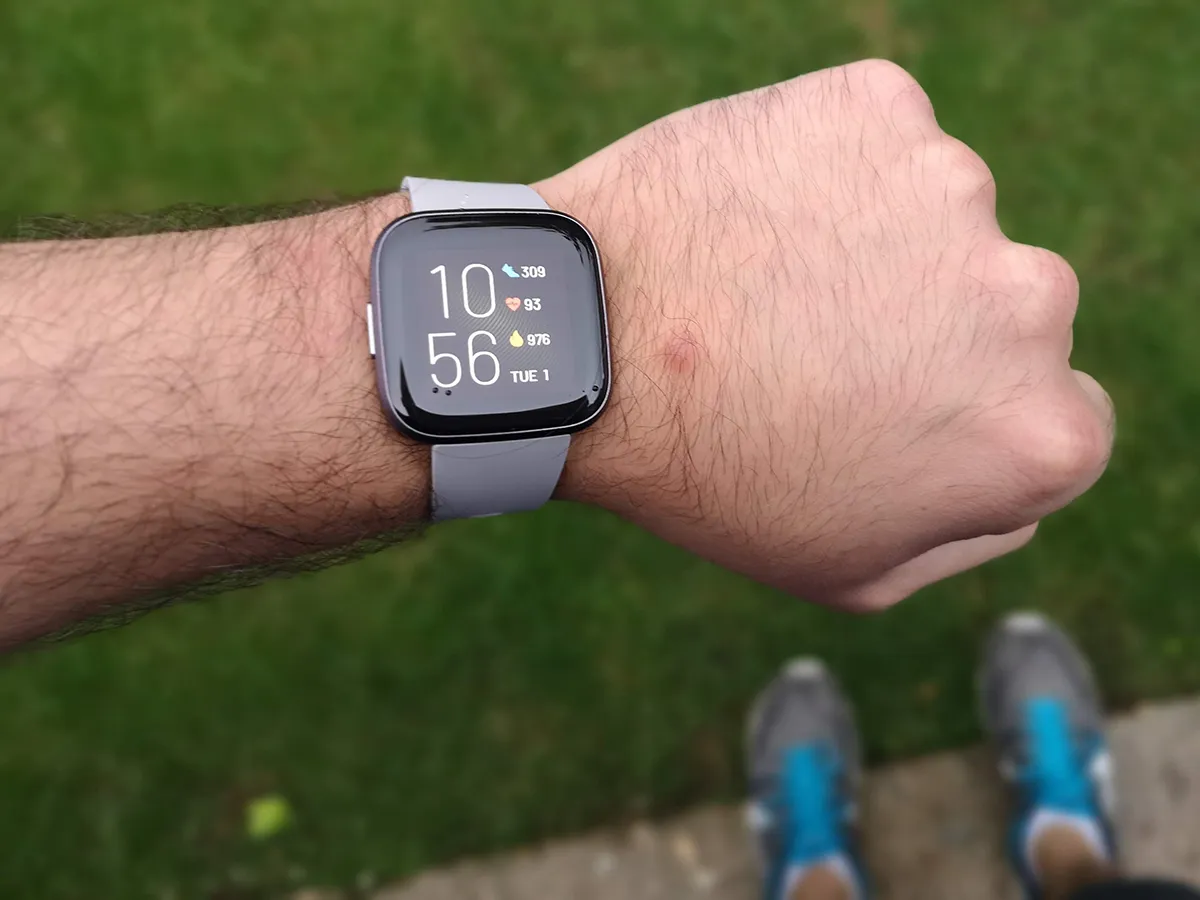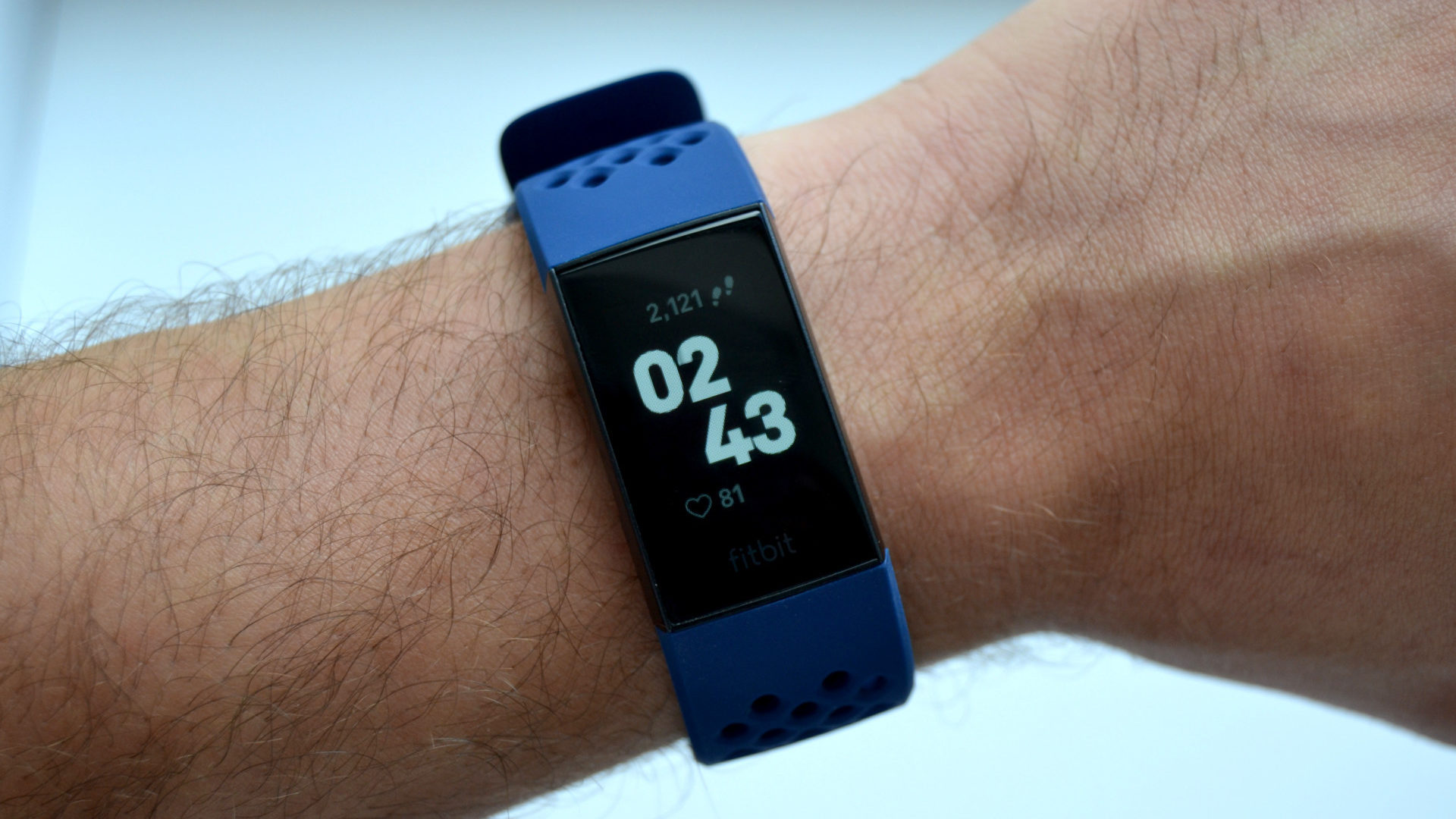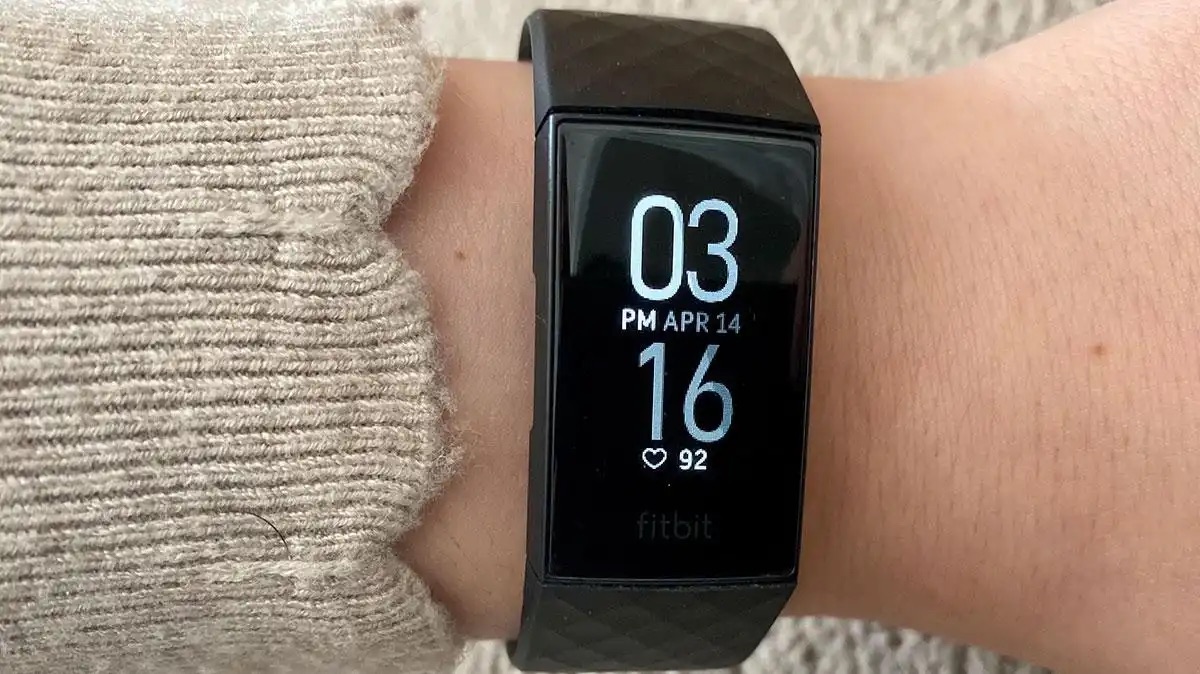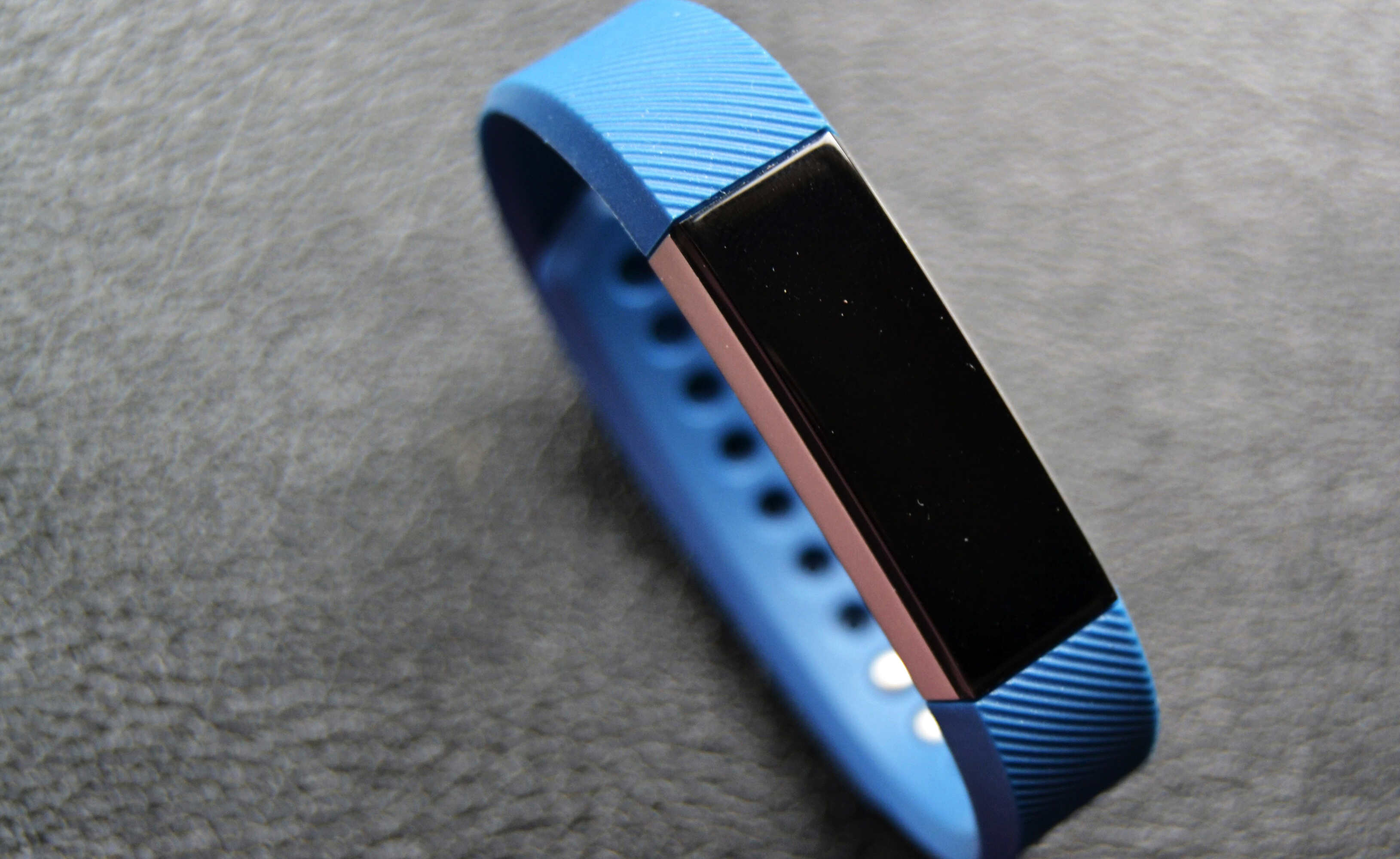Introduction
When it comes to tracking our fitness and wellness goals, wearable devices like Fitbit have revolutionized the way we monitor our daily activities, exercise routines, and sleep patterns. However, encountering issues with the automatic syncing of Fitbit data can be frustrating and disrupt the seamless flow of tracking progress. Whether it's steps taken, heart rate, or sleep data, the automatic sync feature ensures that your Fitbit device seamlessly transfers this valuable information to the associated app on your smartphone or computer.
In this comprehensive troubleshooting guide, we will delve into the common issues that may cause Fitbit not to automatically sync and provide practical solutions to resolve these anomalies. By following these steps, you can swiftly troubleshoot the syncing problem and regain the convenience of effortlessly accessing your fitness and health data.
Let's embark on this troubleshooting journey to unravel the mysteries behind Fitbit's automatic syncing anomalies and equip ourselves with the knowledge to overcome these challenges. Whether you're a fitness enthusiast, an avid tracker of daily activities, or someone striving for a healthier lifestyle, the ability to troubleshoot Fitbit syncing issues will ensure that you stay on track with your wellness goals without any hindrances. So, let's dive into the troubleshooting process and reclaim the seamless syncing experience that Fitbit is renowned for providing.
Check Internet Connection
One of the primary factors that can impede the automatic syncing of your Fitbit device is an unstable or disconnected internet connection. Before delving into more complex troubleshooting steps, it's essential to ensure that your internet connectivity is robust and stable. Here's how you can effectively check and address this potential issue:
-
Wi-Fi or Mobile Data: Begin by confirming that your smartphone or computer, which is linked to your Fitbit device, has a stable internet connection. Check if your Wi-Fi network is functioning optimally or if your mobile data plan is active and providing a reliable internet connection. Sometimes, a simple switch from Wi-Fi to mobile data or vice versa can resolve any connectivity issues that may be hindering the automatic syncing process.
-
Network Signal Strength: If you're using a smartphone to sync your Fitbit data, ensure that the network signal strength is adequate. Weak cellular signals or poor Wi-Fi reception can disrupt the seamless transfer of data between your Fitbit device and the associated app. Moving closer to your Wi-Fi router or accessing a location with better network coverage can significantly improve the internet connection's stability.
-
Router Reboot: If you're experiencing connectivity issues with your Wi-Fi network, consider rebooting your router to refresh the internet connection. This simple yet effective step can resolve temporary network disruptions and enhance the syncing process.
-
Network Settings: Check the network settings on your smartphone or computer to verify that there are no restrictions or limitations that could be impeding the Fitbit app's access to the internet. Sometimes, restrictive network settings or firewall configurations can prevent the app from establishing a seamless connection for automatic syncing.
By meticulously examining and addressing potential internet connectivity issues, you can lay a solid foundation for troubleshooting Fitbit's automatic syncing anomalies. Once you've verified that your internet connection is stable and robust, you can proceed to explore additional troubleshooting steps to ensure that your Fitbit device seamlessly transfers data to the associated app, empowering you to stay on track with your fitness and wellness goals.
Restart Fitbit Device
Restarting your Fitbit device is a fundamental troubleshooting step that can effectively address syncing issues and restore seamless communication between the device and its associated app. By initiating a restart, you can potentially resolve temporary software glitches, memory conflicts, or minor technical hiccups that may be hindering the automatic syncing process. Here's a detailed exploration of the steps involved in restarting your Fitbit device to troubleshoot syncing anomalies:
How to Restart Fitbit Device
-
Charge Your Fitbit: Before proceeding with the restart, ensure that your Fitbit device has an adequate battery level. If the device's battery is low, connect it to the charger and allow it to attain a sufficient charge. A depleted battery can impact the device's functionality and hinder the restart process.
-
Locate the Power Button: Depending on the model of your Fitbit device, locate the power button or the combination of buttons that facilitate the restart function. For instance, the Fitbit Charge 4 features a built-in button that serves as the power button, while the Fitbit Versa 3 and Sense models require a specific button combination to initiate the restart.
-
Initiate the Restart: Press and hold the power button or the designated button combination for a few seconds until you see the Fitbit logo or feel a vibration, indicating that the restart process has been initiated. Release the button(s) once the device responds to the restart command.
-
Wait for the Restart: Allow your Fitbit device to complete the restart process. This may take a few seconds, during which the device's screen may briefly go blank before displaying the Fitbit logo or the device's home screen, depending on the model.
Benefits of Restarting Fitbit Device
-
Software Refresh: A restart can refresh the device's software, potentially resolving minor software glitches or performance issues that could be affecting the automatic syncing functionality.
-
Memory Clearance: Restarting the Fitbit device clears temporary memory caches and resets system processes, creating a clean slate for the device to establish seamless communication with the associated app.
-
Technical Stability: By initiating a restart, you can promote technical stability within the Fitbit device, ensuring that it operates optimally and facilitates the automatic syncing of data without interruptions.
By following these steps to restart your Fitbit device, you can effectively troubleshoot syncing anomalies and pave the way for a smooth and uninterrupted transfer of fitness and wellness data from the device to the associated app. This foundational troubleshooting step can often serve as a quick and reliable solution to address syncing issues, empowering you to stay connected to your progress and achieve your health and fitness goals with ease.
Update Fitbit App
Ensuring that your Fitbit app is running on the latest version is crucial for maintaining optimal functionality and resolving potential syncing issues. Regular updates to the Fitbit app introduce bug fixes, performance enhancements, and compatibility improvements, which collectively contribute to a seamless syncing experience. Here's a detailed exploration of the steps involved in updating the Fitbit app to troubleshoot syncing anomalies:
How to Update Fitbit App
- App Store or Google Play: Open the respective app store on your smartphone, whether it's the Apple App Store for iOS devices or the Google Play Store for Android devices.
- Search for Fitbit: In the app store's search bar, enter "Fitbit" to locate the Fitbit app in the search results.
- Check for Updates: If an update is available for the Fitbit app, you will see an "Update" button next to the app's listing. Tap on this button to initiate the update process.
- Install Update: Follow the on-screen prompts to download and install the latest version of the Fitbit app on your smartphone.
Benefits of Updating Fitbit App
- Enhanced Compatibility: Updating the Fitbit app ensures that it remains compatible with the latest features and functionalities of your Fitbit device, promoting seamless syncing and data transfer.
- Bug Fixes and Improvements: The latest app updates often include bug fixes and performance improvements that address syncing anomalies and enhance the overall user experience.
- Security Enhancements: App updates may incorporate security patches and measures, safeguarding your data and ensuring a secure syncing environment.
By proactively updating the Fitbit app on your smartphone, you can optimize the syncing process and mitigate potential obstacles that may arise from using outdated app versions. This proactive approach to app maintenance empowers you to harness the full potential of your Fitbit device, ensuring that your fitness and wellness data seamlessly syncs to the app, providing you with valuable insights and progress tracking.
Incorporating the habit of regularly checking for and installing Fitbit app updates is a proactive measure that aligns with the brand's commitment to delivering a seamless and user-centric experience. By staying abreast of the latest app versions, you can harness the full capabilities of your Fitbit device and app ecosystem, enabling you to effortlessly track and monitor your fitness journey without encountering syncing disruptions.
Remember, a well-maintained Fitbit app not only streamlines the syncing process but also enhances the overall user experience, allowing you to focus on your wellness goals with confidence and convenience.
Ensure Bluetooth is Enabled
One of the essential prerequisites for the seamless automatic syncing of your Fitbit device is the active and enabled status of Bluetooth on your smartphone or computer. Bluetooth technology serves as the communication bridge between your Fitbit device and the associated app, facilitating the transfer of fitness and wellness data. Therefore, ensuring that Bluetooth is enabled and functioning optimally is paramount for troubleshooting syncing anomalies. Here's a comprehensive exploration of the steps involved in verifying and enabling Bluetooth connectivity to enhance the syncing experience:
How to Verify and Enable Bluetooth Connectivity
-
Access Bluetooth Settings: Begin by accessing the Bluetooth settings on your smartphone or computer. Navigate to the device's settings menu and locate the Bluetooth option. For smartphones, this can typically be found under the "Connections" or "Network & Internet" section, while computers often feature a Bluetooth icon in the system tray or a dedicated settings menu.
-
Enable Bluetooth: If Bluetooth is currently disabled, toggle the switch or button to enable it. On smartphones, this involves tapping the Bluetooth option to turn it on, while computers may require clicking on the Bluetooth icon and selecting the "Turn Bluetooth On" option.
-
Pairing Confirmation: Once Bluetooth is enabled, ensure that your Fitbit device is successfully paired with your smartphone or computer. If the pairing has been disrupted or lost, initiate the pairing process to establish a secure and stable connection between the Fitbit device and the associated app.
-
Signal Strength Verification: Verify that the Bluetooth signal strength is adequate for seamless communication between your Fitbit device and the app. Weak signal strength or interference from other devices can disrupt the syncing process, so positioning your Fitbit device and smartphone in close proximity can optimize Bluetooth connectivity.
Benefits of Enabled Bluetooth Connectivity
-
Seamless Data Transfer: With Bluetooth enabled, the Fitbit device can seamlessly transfer fitness and wellness data to the associated app, ensuring that your progress is accurately tracked and recorded.
-
Real-Time Syncing: Enabled Bluetooth allows for real-time syncing of data, providing you with immediate access to your activity metrics, heart rate readings, and sleep patterns without delays or interruptions.
-
Effortless Connectivity: By maintaining an active Bluetooth connection, you eliminate potential barriers to syncing and empower your Fitbit device to effortlessly communicate with the app, streamlining your wellness tracking experience.
By diligently verifying and enabling Bluetooth connectivity, you can fortify the foundation for automatic syncing, ensuring that your Fitbit device seamlessly transfers crucial fitness and health data to the associated app. This proactive approach to optimizing Bluetooth connectivity aligns with the overarching goal of maintaining a smooth and uninterrupted syncing experience, empowering you to stay connected to your wellness journey with ease and confidence.
Check Fitbit Battery Level
Monitoring the battery level of your Fitbit device is a pivotal aspect of troubleshooting syncing anomalies and ensuring uninterrupted functionality. A depleted or critically low battery can significantly impede the automatic syncing process, leading to disruptions in the transfer of vital fitness and wellness data. By diligently checking and maintaining the battery level of your Fitbit device, you can proactively mitigate potential syncing obstacles and uphold a seamless tracking experience.
Here's a comprehensive exploration of the steps involved in checking the Fitbit battery level and leveraging this vital information to troubleshoot syncing anomalies:
How to Check Fitbit Battery Level
-
Device Display: Depending on the model of your Fitbit device, you can typically access the battery level directly from the device's display. Navigating to the device's settings or information screen often provides a clear indication of the current battery status, allowing you to assess whether the battery level is optimal for continued syncing operations.
-
Fitbit App: Utilize the Fitbit app on your smartphone or computer to access detailed insights into the battery level of your Fitbit device. By navigating to the device settings within the app, you can view the current battery percentage and receive low battery notifications, enabling you to take proactive measures to maintain the device's functionality.
-
Charging Indicators: When charging your Fitbit device, the presence of charging indicators such as LED lights or on-screen prompts can provide real-time feedback on the battery level. Monitoring the charging process allows you to gauge the device's battery health and readiness for seamless syncing.
Benefits of Monitoring Fitbit Battery Level
-
Syncing Reliability: By consistently monitoring the Fitbit device's battery level, you can preemptively address potential syncing disruptions caused by low battery levels, ensuring that the automatic syncing process remains reliable and consistent.
-
Operational Continuity: Maintaining an optimal battery level sustains the operational continuity of the Fitbit device, allowing it to seamlessly communicate with the associated app and transfer essential fitness and wellness data without interruptions.
-
Long-Term Device Health: Regularly checking and managing the battery level contributes to the long-term health and performance of the Fitbit device, safeguarding its functionality and preserving its ability to support automatic syncing seamlessly.
By proactively checking and managing the Fitbit device's battery level, you can fortify the foundation for a consistent and uninterrupted syncing experience, empowering you to stay connected to your fitness and wellness journey with confidence and reliability. This proactive approach aligns with the overarching goal of maintaining a seamless syncing process, ensuring that your progress is accurately tracked and recorded without the impediments posed by low battery levels.
Reinstall Fitbit App
Reinstalling the Fitbit app can serve as a potent troubleshooting strategy to address persistent syncing anomalies and restore the seamless transfer of fitness and wellness data between your Fitbit device and the associated app. This comprehensive approach involves removing the existing app from your smartphone or computer and subsequently reinstalling it to ensure a clean and optimized installation. By embarking on this proactive troubleshooting journey, you can effectively mitigate underlying app-related issues that may be impeding the automatic syncing process.
How to Reinstall Fitbit App
-
Uninstall the Existing App: Initiate the reinstallation process by uninstalling the Fitbit app from your smartphone or computer. On iOS devices, press and hold the app icon until it wiggles, then tap the "X" icon to delete it. For Android devices, navigate to the app settings, select Fitbit, and choose the "Uninstall" option.
-
Clear App Data (Optional): If your smartphone allows, consider clearing the app data and cache associated with the Fitbit app. This step ensures that any residual data or temporary files that may be contributing to syncing issues are removed before reinstalling the app.
-
Download and Install the App: Visit the Apple App Store for iOS devices or the Google Play Store for Android devices to download the Fitbit app. Follow the on-screen prompts to install the app on your smartphone, ensuring that you grant the necessary permissions for seamless functionality.
-
Login and Sync Fitbit Device: Once the Fitbit app is successfully reinstalled, log in with your credentials and proceed to sync your Fitbit device with the app. This step establishes a fresh connection between the device and the app, potentially resolving any lingering syncing anomalies.
Benefits of Reinstalling Fitbit App
-
Clean Installation: Reinstalling the Fitbit app provides a clean slate for establishing a robust and optimized syncing environment, free from potential software conflicts or corruption that may have affected the previous installation.
-
Updated Dependencies: The reinstallation process ensures that all dependencies and components of the Fitbit app are up to date, aligning with the latest software and firmware requirements of your Fitbit device for seamless syncing.
-
Resolution of App-Related Issues: By reinstalling the app, you can effectively address app-specific issues, such as software bugs, compatibility conflicts, or configuration errors that may have hindered the automatic syncing process.
By diligently following the steps to reinstall the Fitbit app, you can proactively address syncing anomalies and fortify the foundation for a consistent and uninterrupted syncing experience. This proactive troubleshooting approach aligns with the overarching goal of maintaining a seamless syncing process, enabling you to effortlessly track and monitor your fitness journey without encountering app-related disruptions.
Contact Fitbit Support
If you've diligently attempted the troubleshooting steps outlined in this guide and are still encountering persistent syncing anomalies with your Fitbit device, reaching out to Fitbit Support can provide invaluable assistance in resolving the issue. Fitbit's dedicated support team comprises knowledgeable professionals who specialize in addressing a wide range of technical concerns, including syncing disruptions, app-related issues, and device performance challenges.
When initiating contact with Fitbit Support, it's essential to provide comprehensive details regarding the specific syncing anomalies you're experiencing. This includes elucidating the steps you've already taken to troubleshoot the issue, such as restarting the device, updating the app, and verifying Bluetooth connectivity. Additionally, sharing pertinent information about your Fitbit device model, the version of the associated app, and the type of smartphone or computer you're using can facilitate a more targeted and effective support interaction.
Fitbit offers multiple channels for contacting their support team, including online chat support, email assistance, and community forums where users can seek guidance from fellow Fitbit enthusiasts and official support representatives. The online chat support option provides real-time interaction with a Fitbit support agent, allowing you to receive immediate guidance and troubleshooting insights tailored to your specific syncing concerns.
In situations where immediate assistance may not be imperative, utilizing the email support option enables you to articulate the details of the syncing anomalies comprehensively. This written communication allows you to convey nuanced aspects of the issue, including any error messages or recurrent patterns you've observed during the syncing process. By providing a detailed account of the syncing anomalies, you empower Fitbit Support to offer targeted and insightful guidance to address the root cause of the issue.
Furthermore, engaging with the vibrant Fitbit community forums can offer a collaborative and insightful approach to troubleshooting syncing anomalies. Fellow Fitbit users, along with official support representatives, actively participate in these forums, sharing their experiences and offering practical solutions to diverse technical challenges. Leveraging the collective knowledge and expertise within the Fitbit community can often yield innovative troubleshooting strategies and alternative perspectives to address syncing disruptions.
In essence, contacting Fitbit Support signifies a proactive and collaborative approach to resolving persistent syncing anomalies, ensuring that you receive tailored guidance and expert insights to overcome technical hurdles. By leveraging the expertise of Fitbit's support resources, you can navigate through complex syncing challenges with confidence, reclaiming the seamless syncing experience that is integral to tracking your fitness and wellness journey effectively.







